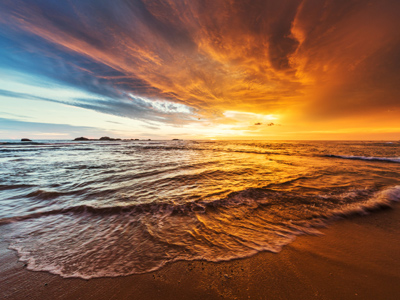What is one of the most vital things that all living creatures need in order to survive? Water is definitely one, food another and being able to reproduce is yet another. However, none of these would help us if living things couldn’t breathe. We need oxygen to be able to breathe. Oxygen that is found in the air. It is the Earth’s air that allows for life on Earth. This air is also known as atmosphere.
The study of the Earth’s atmosphere and weather patterns is known as meteorology. Those who study these two Earth Science areas are known as meteorologists.
The atmosphere is composed of a group of gases. These gases are made up of 78% nitrogen, 21% oxygen and 1% of a number of other gases including argon, carbon dioxide and helium. The atmosphere is really a very thin layer that surrounds Earth and is kept in place by the gravitational pull of the Earth. The atmosphere protects the Earth from the harmful rays of the sun and it acts rather like a blanket by keeping the surface of the planet warm.
The atmosphere is then divided into four main layers. These layers include the following:
Layers of the Atmosphere:
- The Troposphere. The Troposphere is the lowest portion of the Earth’s atmosphere. It extends from the surface of the Earth upwards for approximately 7 miles making it the level in which we and all life lives. It is also the level in which Earth’s weather occurs. However, the higher up in the Troposphere that you go, the oxygen levels decrease making it impossible to breathe.
- The Stratosphere. The Stratosphere is the second layer of the atmosphere and is located between the Troposphere and the Mesosphere. It begins approximately 7 miles above the Earth’s surface and extends to about 31 miles up from there. The Stratosphere is very dry with very little water vapors. Because of this, it is very difficult for any clouds to appear in this layer. This is the reason why most commercial airplanes fly in the lower levels of the Stratosphere. Turbulence is much lower and less frequent allowing for smoother flights. In addition, weather balloons are sent into the Stratosphere and burst in its upper levels.
The ozone is found in the Stratosphere level. The ozone absorbs the sun’s energy and converts it to heat to be able to keep the Earth’s air warm.
- The Mesosphere. The Mesosphere is the layer of the atmosphere that lies between the Stratosphere and the Thermosphere. In the Mesosphere, temperature decreases as altitude increases. It is in the Mesosphere where most meteoroids burn up and where you can see the trails of meteors.
- The Thermosphere. The Thermosphere is divided into two parts, i.e., the Ionosphere and the Exosphere. The Ionosphere is the lower level of the Thermosphere. It is in the Ionosphere where the aurora borealis occurs.
The aurora borealis is often referred to as the “Northern Lights” and on some occasions the “Southern Lights.” This light show phenomenon occurs when particles from the sun enter into the Ionosphere near either the North Pole or the South Pole. When the particles strike oxygen and nitrogen atoms in the Ionosphere, their impact emits a glow in the sky.
The Exosphere is the upper or outer level of the Thermosphere. It is in this layer where television, as well as telephone and satellites are sent to orbit the Earth.
The Thermosphere does not have a definite outer limit meaning that it doesn’t just suddenly end but rather extends outward into space. It extends above the Earth’s surface for upwards of 621 miles but then thins out so its actual end is unknown. The Space Shuttles and the Space Station orbit the Earth in the Thermosphere.
Now whenever you look upward, you’ll have a little more understanding what’s up there. It also gives you an appreciation of the importance of each layer of our atmosphere.
Feeling confident? If so, take a look at the following ten questions about the atmosphere and see just how many you can get right without having to take a look back at this introduction.








